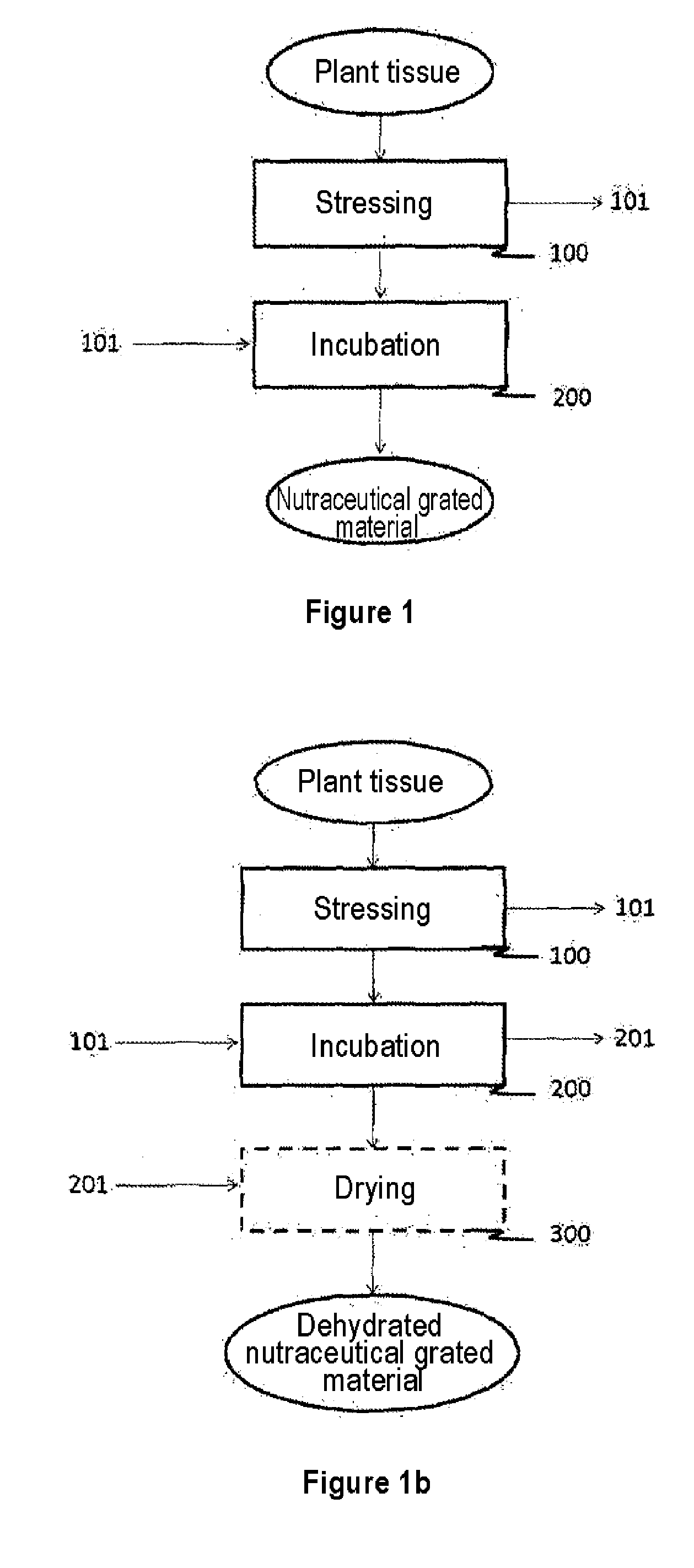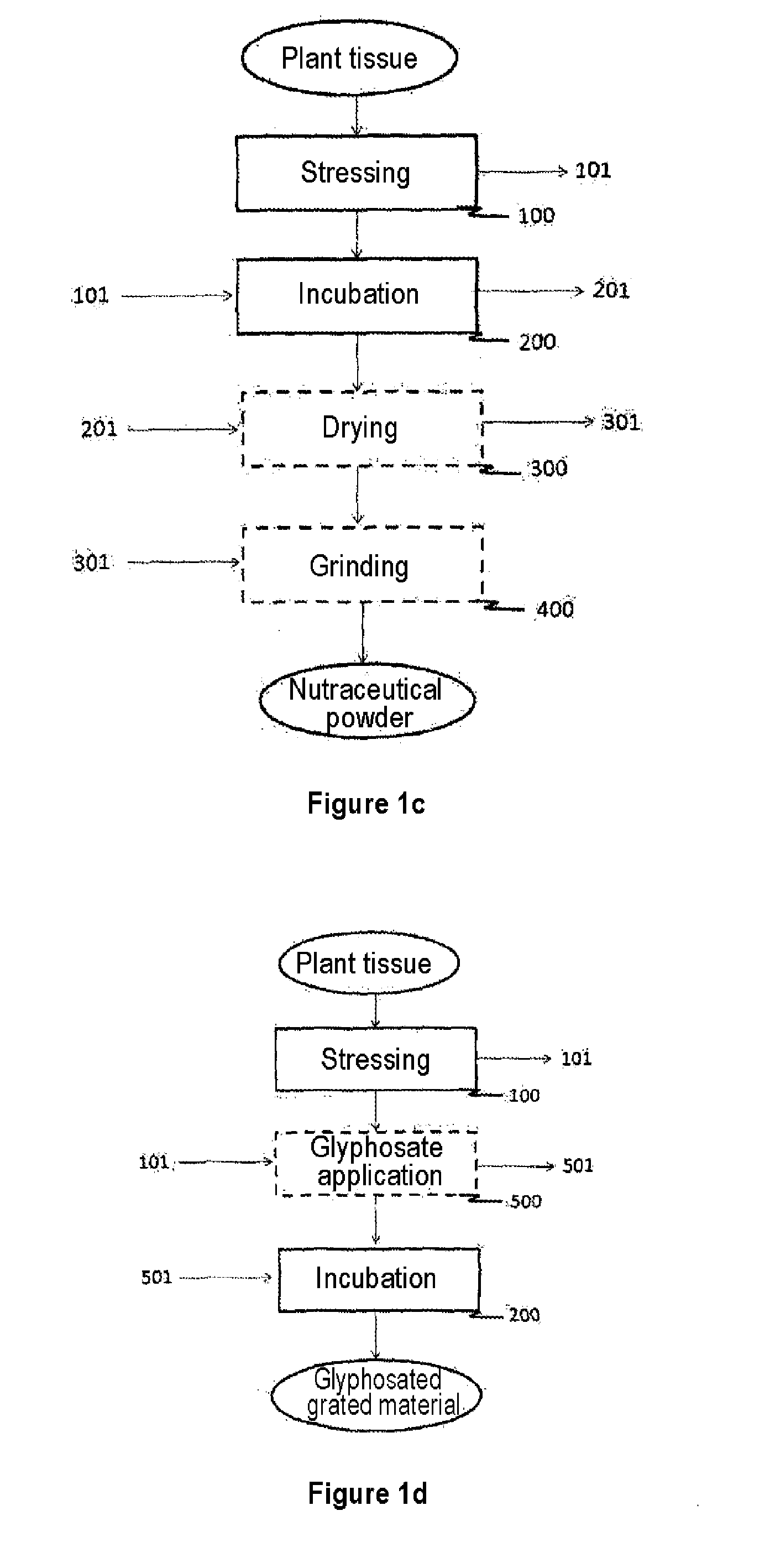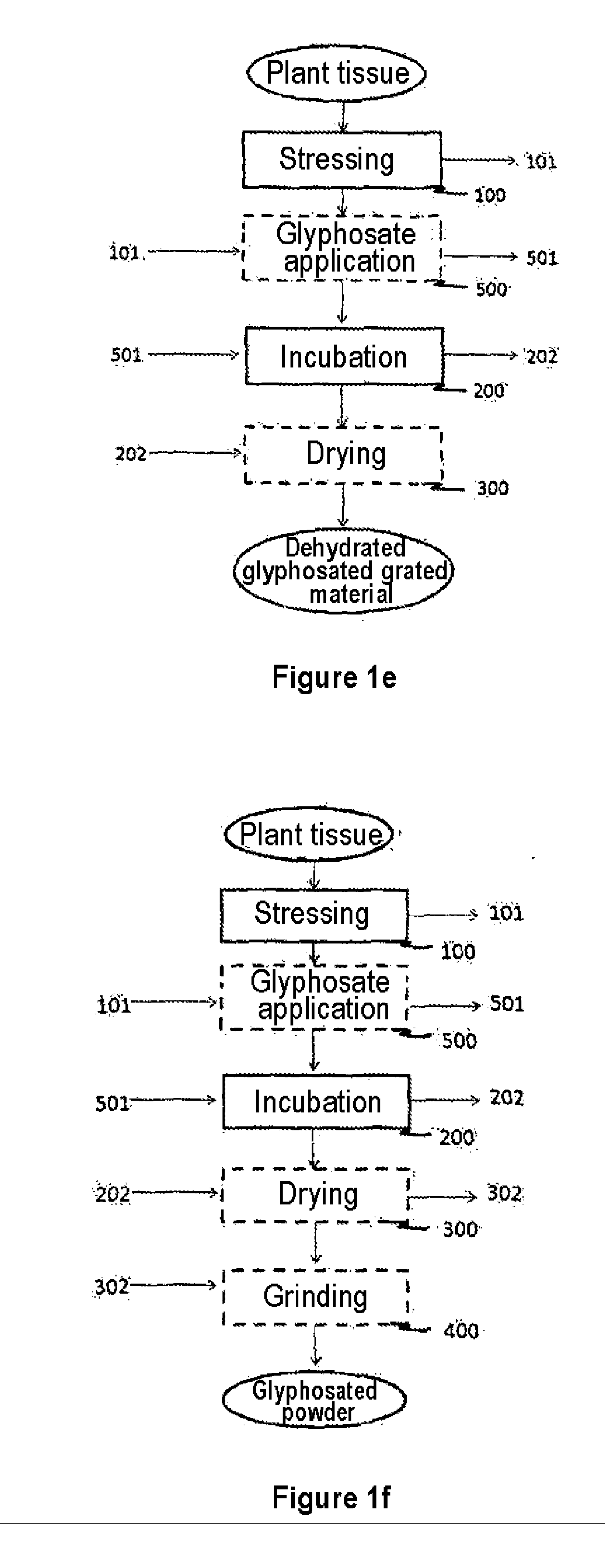Process for the overproduction of shikimic acid and phenolic acids in fruit and vegetable crops
a technology of phenolic acids and shikimic acid, which is applied in the directions of animal repellents, biocide, plant/algae/fungi/lichens ingredients, etc., can solve the problems of transgenic plant line cultivation, technical complexity of metabolic engineering, etc., and achieves high pharmaceutical and nutraceutical value and easy handling
- Summary
- Abstract
- Description
- Claims
- Application Information
AI Technical Summary
Benefits of technology
Problems solved by technology
Method used
Image
Examples
example 1
Effect of Wounding Stress on the Accumulation of SA
[0070]The plant material used in this example comprised carrots (Daucus carota) obtained from a local supermarket (Monterrey, N. L., Mexico), which were washed and disinfected with chlorinated water in a concentration of 200 ppm, pH 6.5, in a ratio of 1:3 kg of plant material:liters of chlorinated water, for 10 min.
[0071]Stage a) The previously washed and disinfected carrots were subjected to post-harvest abiotic stress.
[0072]This stage was carried out by grating the carrot with a commercial vegetable grater. Stressed grated carrots having a diameter of 0.7 cm were obtained.
[0073]Stage b) Incubation of the grated carrot stressed in a) to encourage the production and accumulation of SA and PC.
[0074]In particular 300 grams of stressed grated carrot obtained in stage a) were placed in open plastic containers having a capacity of 5.7 L (Sterilite, Townsend, USA) and incubated in an incubator for 48 hours (VWR, Radnor, USA) at 25° C. and...
example 2
Effect of Drying on the Accumulation of SA
[0077]The plant material used in this example comprised carrots (Daucus carota) obtained from a local supermarket (Monterrey, N. L., Mexico), which were washed and disinfected with chlorinated water in a concentration of 200 ppm, pH 6.5, in a ratio of 1:3 kg of plant material:liters of chlorinated water, for 10 min.
Stage a) the Previously Washed and Disinfected Carrots were Subjected to Post-Harvest Abiotic Stress.
[0078]This stage was carried out by grating the carrot with a commercial vegetable grater. Stressed grated carrots having a diameter of 0.7 cm were obtained.
[0079]Stage b) Incubation of the Grated Carrot Stressed in a) to Encourage the Production and Accumulation of SA and PC.
[0080]In particular 300 grams of stressed grated carrot obtained in stage a) were placed in open plastic containers having a capacity of 5.7 L (Sterilite, Townsend, USA) and incubated in an incubator for 48 hours (VWR, Radnor, USA) at 25° C. and at atmospheric...
example 3
Effect of Grinding on the Accumulation of SA
[0083]The plant material used in this example comprised carrots (Daucus carota) obtained from a local supermarket (Monterrey, N. L., Mexico), which were washed and disinfected with chlorinated water in a concentration of 200 ppm, pH 6.5, in a ratio of 1:3 kg of plant material:liters of chlorinated water, for 10 min.
Stage a) the Previously Washed and Disinfected Carrots were Subjected to Post-Harvest Abiotic Stress.
[0084]This stage was carried out by grating the carrot with a commercial vegetable grater. Stressed grated carrots having a diameter of 0.7 cm were obtained.
Stage b) Incubation of the Grated Carrot Stressed in a) to Encourage the Production and Accumulation of SA.
[0085]In particular 300 grams of stressed grated carrot obtained in stage a) were placed in open plastic containers having a capacity of 5.7 L (Sterilite, Townsend, USA) and incubated in an incubator for 48 hours (VWR, Radnor, USA) at 25° C. and at atmospheric pressure w...
PUM
| Property | Measurement | Unit |
|---|---|---|
| diameter | aaaaa | aaaaa |
| diameter | aaaaa | aaaaa |
| concentration | aaaaa | aaaaa |
Abstract
Description
Claims
Application Information
 Login to View More
Login to View More - R&D
- Intellectual Property
- Life Sciences
- Materials
- Tech Scout
- Unparalleled Data Quality
- Higher Quality Content
- 60% Fewer Hallucinations
Browse by: Latest US Patents, China's latest patents, Technical Efficacy Thesaurus, Application Domain, Technology Topic, Popular Technical Reports.
© 2025 PatSnap. All rights reserved.Legal|Privacy policy|Modern Slavery Act Transparency Statement|Sitemap|About US| Contact US: help@patsnap.com



